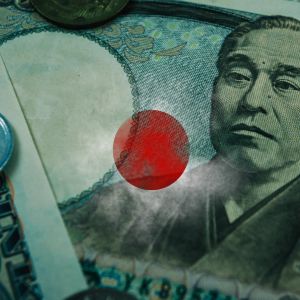Japan’s bond market flashes warning over US outflows and carry trade unwind
3 min read
Japan’s long-term bond yields are exploding upward in a way that’s turning global capital markets into a minefield, especially for the US As of last week, 40-year Japanese government bonds hit a record yield of 3.689%, before easing to 3.318% by Wednesday — still nearly 70 basis points higher since January. Meanwhile, the 30-year yield jumped more than 60 basis points to 2.914%, and 20-year bonds moved up over 50 basis points, pushing borrowing costs across the curve to dangerous levels. The demand for these ultra-long bonds dropped hard. Reuters calculated that Wednesday’s auction saw the weakest appetite for 40-year bonds since July 2023. If Japanese investors, who’ve been some of the largest holders of American stocks and debt, decide to pull money back home, it’s a direct blow to the US financial system. And that’s exactly what multiple analysts say is coming. Investors weigh exit as Japanese yields climb Michael Gayed, portfolio manager at Tidal Financial Group, called Japan a “ticking time bomb” in an interview. “If confidence in one of the financial market’s traditionally safe assets has cratered, confidence in the global market could go with it,” he said. That collapse in confidence may lead Japanese investors to yank funds from the US in a TON of capital repatriation. Analysts at Macquarie warned that if Japan’s bond yields rise much further, investors there may hit a “trigger point” and rapidly retreat from US markets. If that happens, Albert Edwards, global strategist at Societe Generale, said it could result in a “global financial market Armageddon.” Albert believes the US tech sector is particularly vulnerable. He told CNBC that Japan’s investments in the US haven’t just been about higher interest-rate gains; currency gains played a big role too. A stronger yen, which is often the result of rising Japanese yields, crushes that benefit. This puts US stocks, especially tech, directly in the line of fire. Carry trade faces fresh pressure from yield curve twist Rising yields in Japan aren’t happening by accident. Rong Ren Goh, portfolio manager at Eastspring Investments, explained that life insurance companies, who’ve long been the main buyers of 30- and 40-year bonds, have basically finished their required purchases. With the Bank of Japan cutting back its own bond buying, and no private players stepping in to fill the gap, the result is a spike in yields and a shake-up in investor behavior. That’s where the carry trade gets crushed. For years, investors have borrowed in yen (because of Japan’s low interest rates) to invest in higher-yielding assets abroad. But when yen-based trades start to unravel, it can get messy. That already happened last August, when the Bank of Japan raised rates. The yen surged, carry trades were unwound, and global markets tanked. Michael Gayed said traders wrongly assumed that it was a one-off event. “That could lead to a lot of traders unwinding those short yen positions,” he said. “And then you’re looking at a potential repeat of last August.” Others believe the fallout may happen more slowly. Guy Stear, head of developed markets research at Amundi, said the gap between the US and Japan’s 2-year bond yields has narrowed from 450 basis points in Q2 2024 to about 320 points now. That shrinking spread makes shorting the yen less appealing and may slow the unwind. But that doesn’t mean capital outflows won’t happen. State Street data shows that most of Japan’s exposure is in US equities, not bonds. Apollo’s chief economist, Torsten Slok, said foreign holdings in US stocks are near $18.5 trillion, with Treasurys closer to $7.2 trillion. Your crypto news deserves attention – KEY Difference Wire puts you on 250+ top sites

Source: Cryptopolitan



